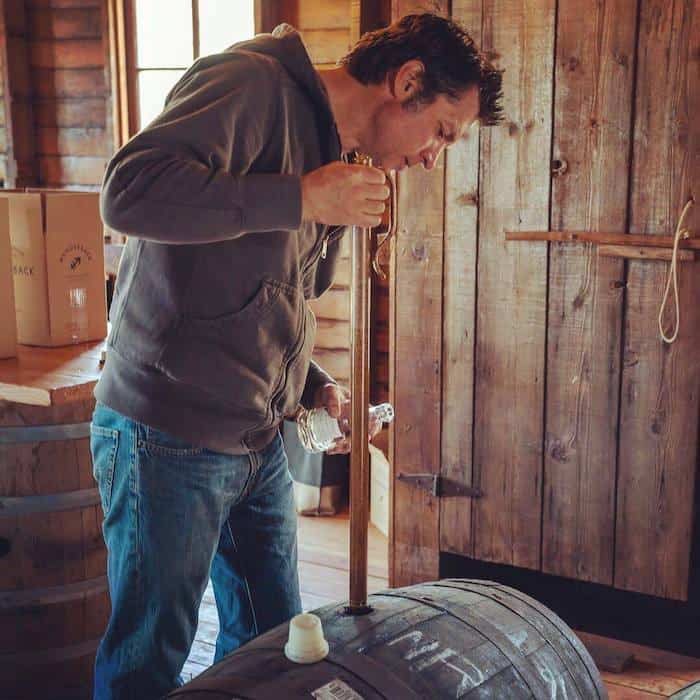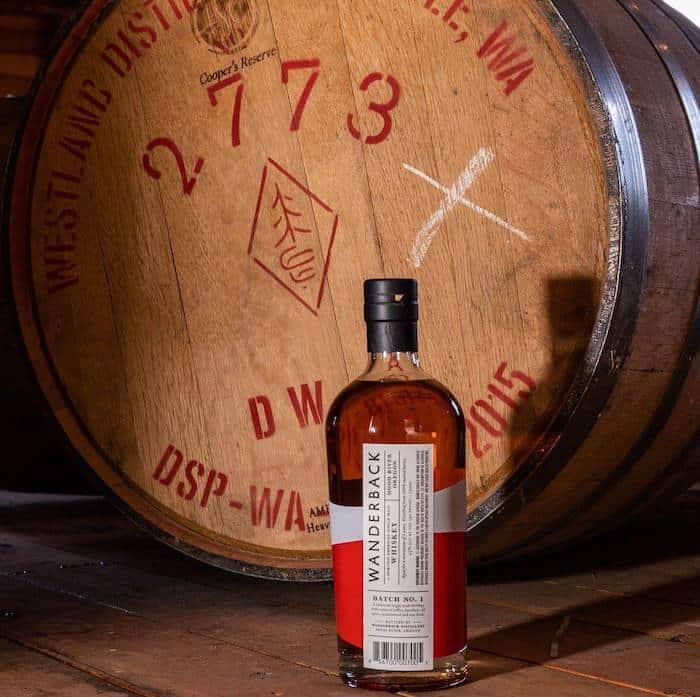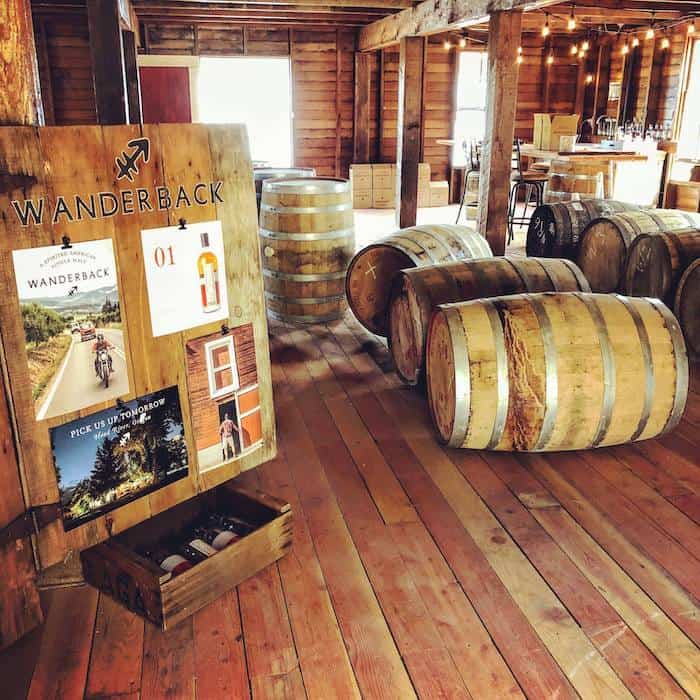The modern day world of the independent bottler/sourced whiskey label is one which got off to a rough start here in the United States, there is no doubt. It isn’t a history we need to rehash in this article, but it is something to at least make reference to as we explore the story of Wanderback Whiskey, an Oregon-based whiskey label that’s part of a newer wave of brands being as transparent as they can in where they source distillate, be it aged or unaged.
Wanderback Whiskey is based on a farm in the Hood River region of Oregon. Founded by one Phil Downer, the label at this point is sourcing unaged American single malt distillate from Washington’s Westland Distillery. It is then put into barrel and aged inside an old barn that’s subject to natural climate conditions. We recently reviewed their first release, finding it to be quite a nice sipping whiskey. Based on this we reached out to Downer for an interview, which you can read below. Note this interview has been edited for brevity and clarity.

The Whiskey Wash (TWW): Go ahead and tell us a little bit about Wanderback Whiskey. How did it start?
Phil Downer: So we basically own a farm in Hood River, Oregon and have for almost 15 years now. And it used to be a cherry and apple orchard. And we did that for a while after we first bought the property but it wasn’t a very easy thing to do, not at the scale at we were doing it on so we decided not to do that any longer. I’ve always been a whiskey lover and I wanted to see if I could pursue that and with the grace of my wife I started looking at regulatory steps and went through that and eventually got the approval from the various federal, state, and county and so on.
We have two old barns on property, And one barn we renovated and basically that became the home of Wanderback about five, six years ago. And basically what we did was initially went out to Westland Distillery in Seattle and I really liked what they were doing. I had been working on a grain bill just on my own, and then had Westland make at their distillery. We worked with [their master distiller] Matt Hoffman on the various steps for yeast selection and the grain bill and then also the fermentation and distillation. Then we had the product shipped down to our barn and that’s when it all began. It’s gone from there, and we aged that product for three years for our first release. Now we are on to our second.
Our hope is to not only highlight how good malt whiskey can be, but also how the different distilleries can have an effect on the final product. Then we focus ourselves on aging and blending the product and bottling at our facility. It’s a bit more of a hybrid strategy for making the whiskey than a traditional distillery might.
TWW: Can you talk a little more about your reasoning for going that particular route?
Downer: Well, there’s a bunch of things. I really enjoyed working with Matt, and I want to try and keep doing that. I mean this guy was doing some great things across the country for a number of craft distilleries that are doing unique things that are quite fun, and to work with them, I thought would be even more interesting than having my own production facility.
It also enables us than to focus on other parts, such as the maturing and the blending and so on. So it’s just a strategy. It enables us to scale a little bit easier and also create some unique products that I’m hoping the market will like. Our strategy is well produced whiskey in such that we’re not making a house blend, but we are basically making these releases, and they will be finite [in scope].

TWW: Talk a little bit about your aging facility. What kind of effect does it have on the whiskey aging that you’ve got going on there?
Downer: We’re lucky in that area of Hood River because we get big temperature swings in the summer that get quite hot, into the 80s and 90s. Then the cool nights. And in the winter we, again, get the swings but never really super cold. It’s pretty rare for us to have snow on the ground. It’s not very humid either, so [overall] the climate is very ideal for aging whiskey and in our little barn there it’s just a really nice spot. It’s this classic tall barn that used to be probably livestock on the bottom floor and hay in the top floor. So even within that barn there are some really nice micro climates, the bottom floor is more like a cellar where the temperature doesn’t swing much, but then the top floor, or the higher floors, are very exposed to big swings in temperature.
TWW: With your second release you did a bit of barrel finishing. What was your philosophy around that?
Downer: The first release was just aged in newer barrels, which I really like, but I wanted to be bold the second time around. Finishing is a difficult thing, and these are barrels that have been used, obviously, for other things. I ordered a bunch of old rum barrels, [and] it’s a nice compliment to the original taste.

TWW: Are you growing or do you have plans to grow your own malted barley?
Downer: We’re actually growing full pint at the farm. Full pint is a Northwest barley that was developed at Oregon State, and it works well with this climate. We’ve made beers quite a bit and I would like to use that for whiskey.
We have a micro malting facility near the Skagit River area, and it’s not cheap, as one of the most expensive steps to making malted barley is the malting step. So I may malt our barley and use it but what I have an interest in, and it takes a distillery with certain equipment, is to use unmalted and just have that, because that’s quite a unique thing in the American malt whiskey category to use unmalted barley. It’s hard to come by but for us it’s easy to come by because we grow it.
TWW: Can you tell us anything about any future planned releases you have?
Downer: I have a big batch of whiskey that’s just been put in barrels from another distillery that’s the same grain bill as our first release. And were doing really fun things that I think are gonna create quite a unique whiskey from our first releases, even though the grain bill is the same. And were in talks with other distilleries as well. As you know the malt whiskey category is still pretty small and there aren’t as many producers as there are for bourbon or rye and we’re looking to make our whiskey on pot stills as well, and there are criteria that we’re trying to stick to.







